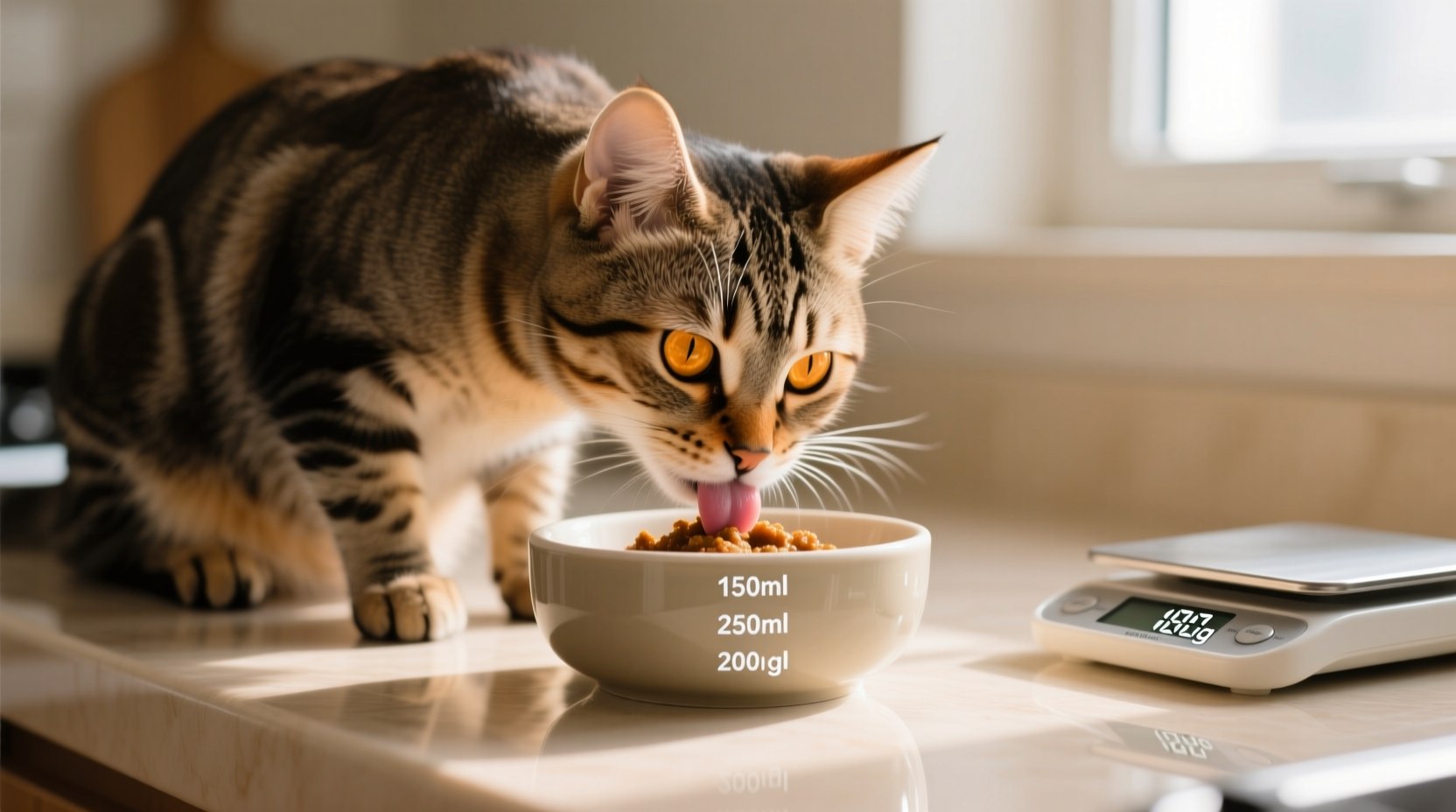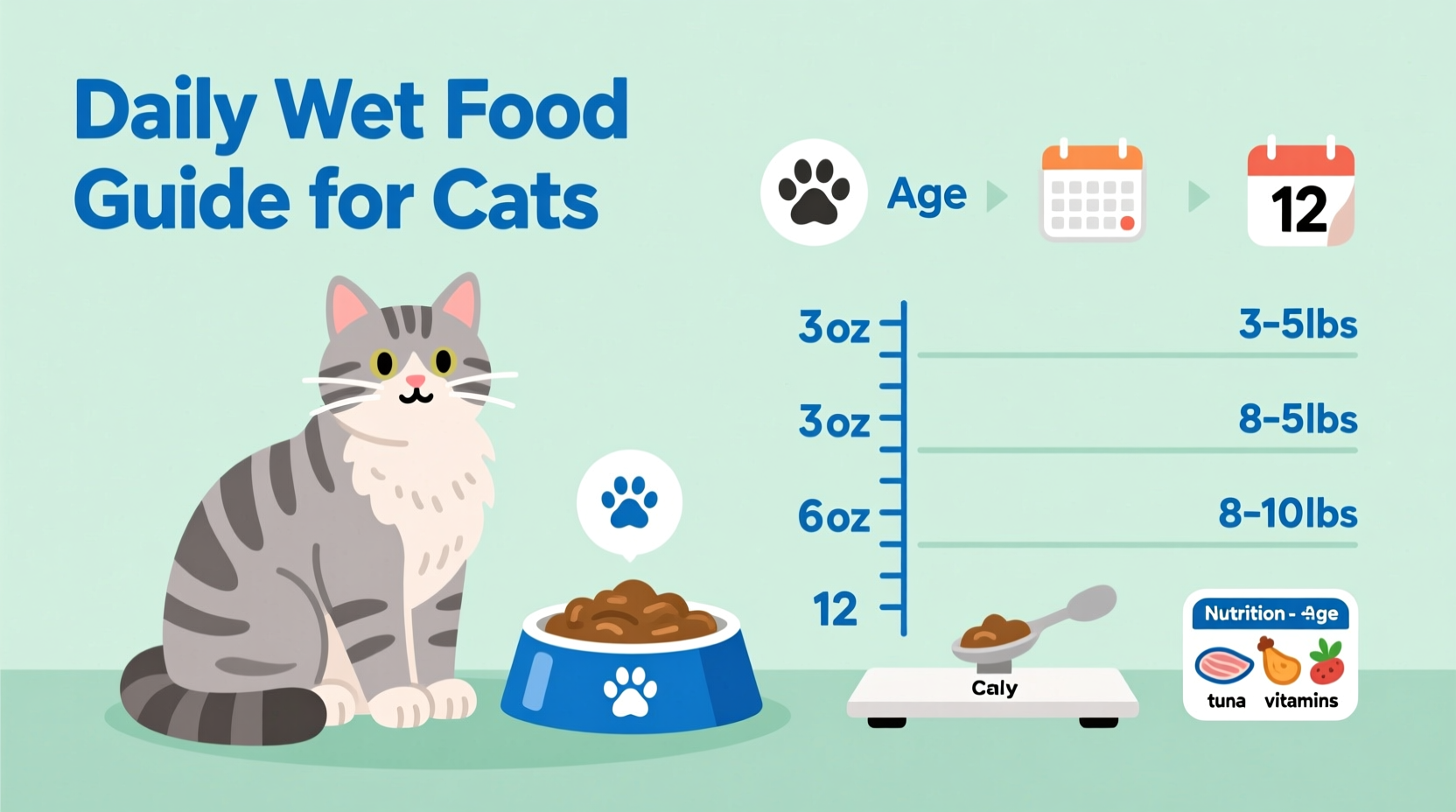Most adult cats need 3-5 ounces (85-140g) of wet food per 5-10 pounds of body weight daily, divided into 2-3 meals. However, portion sizes vary significantly based on age, activity level, health conditions, and specific food formulation. Always consult your veterinarian for personalized recommendations.
Wondering how much wet food to feed cats to keep them healthy and thriving? You're not alone. Many cat owners struggle with portion control, leading to either undernourished or overweight felines. This guide delivers vet-approved portion guidelines tailored to your cat's specific needs, helping you avoid common feeding mistakes that could impact your pet's health.
Why Proper Wet Food Portions Matter for Your Cat
Getting wet food portions right affects your cat's health in multiple ways. Unlike dry food, wet food provides essential hydration (70-80% moisture content), which is crucial for urinary tract health and kidney function. Underfeeding leads to malnutrition and muscle loss, while overfeeding causes obesity—a condition affecting over 60% of domestic cats according to the American Veterinary Medical Association. Proper portions maintain ideal body condition while supporting metabolic health.
Key Factors Determining Your Cat's Wet Food Needs
Before determining how much wet cat food to feed, consider these four critical variables that affect portion sizes:
1. Your Cat's Weight and Body Condition
Weight is the primary factor in calculating portions. The Association of American Feed Control Officials (AAFCO) recommends approximately 20-30 calories per pound of body weight for adult maintenance. However, this varies based on body condition:
| Body Condition | Weight Range | Daily Wet Food Portion | Calorie Range |
|---|---|---|---|
| Underweight | 5-10 lbs | 5-6 oz (140-170g) | 250-300 kcal |
| Ideal Weight | 5-10 lbs | 3-5 oz (85-140g) | 200-250 kcal |
| Overweight | 5-10 lbs | 2.5-4 oz (70-115g) | 175-225 kcal |
This wet cat food portion chart provides general guidelines, but always check your specific food's calorie content as formulations vary significantly between brands.
2. Age-Specific Nutritional Requirements
Cats' nutritional needs change dramatically throughout their life stages:
- Kittens (up to 12 months): Require 2-3 times more calories per pound than adults. Feed 4-6 small meals daily totaling 4-6 ounces per 5 pounds of body weight.
- Adults (1-7 years): Maintain consistent portions based on weight and activity level. Most need 3-5 ounces per 5-10 pounds daily.
- Seniors (7+ years): Often need fewer calories but higher protein. Consult your vet for specific how much wet food to feed senior cats.
3. Activity Level and Lifestyle
Indoor cats typically need 20-30% fewer calories than outdoor or highly active cats. A sedentary indoor cat may need just 2.5 ounces per 5 pounds, while a playful cat might require up to 6 ounces. Monitor your cat's body condition monthly—visible ribs indicate underfeeding, while difficulty feeling ribs suggests overfeeding.
4. Health Conditions and Special Needs
Certain medical conditions dramatically alter feeding requirements:
- Diabetes: Requires consistent meal timing and portion control
- Kidney disease: May need specialized renal diets with adjusted portions
- Hyperthyroidism: Often increases appetite and caloric needs
These cat wet food portion guidelines have important context boundaries. Never apply general recommendations to cats with medical conditions without veterinary consultation. The Cornell Feline Health Center emphasizes that obesity in cats requires medically supervised weight management plans rather than simple portion reduction.

Step-by-Step: Calculating Your Cat's Perfect Wet Food Portions
Follow this vet-approved process to determine exactly how much wet food to feed your cat:
Step 1: Determine Your Cat's Ideal Weight
Weigh your cat accurately using a baby or pet scale. Compare to breed standards—most domestic shorthairs should be 8-10 pounds. Consult your vet if unsure about ideal weight.
Step 2: Check Food Label Calorie Information
Find the kcal per can or pouch on the nutrition label. Standard 3-ounce cans range from 50-100 kcal depending on formulation. Premium brands often provide feeding calculators on their websites.
Step 3: Calculate Daily Caloric Needs
Multiply your cat's ideal weight in pounds by 25-30 for maintenance calories. Example: 10-pound cat needs 250-300 kcal daily.
Step 4: Convert Calories to Portion Size
Divide daily calories by food's kcal per ounce. Example: 250 kcal ÷ 35 kcal/oz = 7.1 ounces daily.
Step 5: Divide into Appropriate Meals
Most adult cats do best with 2-3 meals daily. For our example: 7.1 ounces ÷ 2 meals = 3.5 ounces per meal.
Avoiding Common Wet Food Feeding Mistakes
Even with proper wet cat food portion sizes, these errors can undermine your efforts:
- Free-feeding wet food: Causes spoilage and uncontrolled intake. Wet food should be removed after 30-60 minutes.
- Ignoring treat calories: Treats should comprise no more than 10% of daily calories.
- Mixing wet and dry without adjustment: Failing to reduce dry food when adding wet leads to overfeeding.
- Not adjusting for seasonal changes: Indoor cats may need 10-15% fewer calories in summer.
When to Consult Your Veterinarian
While these how much wet food to feed cats guidelines provide a solid foundation, professional guidance is essential when:
- Your cat gains or loses more than 10% of body weight in a month
- You're transitioning from dry to wet food
- Your cat has diagnosed health conditions
- Portion adjustments don't yield expected results
Veterinary nutritionists can perform body condition scoring and create personalized feeding plans. The American College of Veterinary Nutrition recommends annual nutritional assessments as part of routine care.
Monitoring Your Cat's Response to Feeding Changes
Track these indicators to assess if your wet food portion sizes for cats are appropriate:
- Body condition: Ribs should be easily felt but not visible
- Energy levels: Consistent activity without lethargy
- Coat quality: Shiny, not dull or patchy
- Litter box habits: Well-formed stools, appropriate urine volume
Adjust portions by no more than 10% at a time, monitoring for 2-4 weeks before making further changes. Significant adjustments should occur under veterinary supervision.











 浙公网安备
33010002000092号
浙公网安备
33010002000092号 浙B2-20120091-4
浙B2-20120091-4